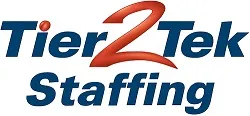Mastering the STAR method represents a crucial strategy for candidates aiming to stand out in job interviews. This technique, structured around Situation, Task, Action, and Result, helps articulate responses in a compelling and organized manner. This article delves into the STAR method’s intricacies, offering job seekers comprehensive guidance to leverage this approach effectively.
What Is the STAR Method?
The STAR method is a structured approach to answering behavioral interview questions. These questions require candidates to recount past professional experiences as evidence of their skills and suitability for the position. By framing responses using the STAR format, candidates can present their stories in a clear, concise, and impactful way.
Understanding the Components of STAR
Situation: Begin by setting the context. Describe a specific event or challenge you encountered in a previous role.
Task: Clarify your responsibilities and what was required of you in that situation.
Action: Detail the steps you took to address the situation. Focus on your contribution and initiative.
Result: Highlight the outcomes of your actions. Quantify the results when possible to underscore your impact.

Situation
(What Was the Problem?)
Crafting an effective “Situation” in your STAR method response is crucial for setting a solid foundation for your story. Here’s how to do it succinctly:
Be Specific: Choose a detailed example from your past roles. Example: “As a project manager in Q4 2020, I led a product launch with a critical deadline.”
Set the Scene Quickly: Provide the necessary details— who, what, when, and where—without dwelling too long. Example: “In September 2019, during a network overhaul for our main client, we faced compliance issues.”
Identify the Challenge: Clearly state the problem or opportunity you faced to showcase the story’s stakes. Example: “We needed to complete the project in two weeks to meet the client’s regulatory deadline.”

Task
(What Was Your Role)
Your task involves detailing the responsibilities and expectations placed upon you in the given situation.
Clarify Your Role: Specify your exact role and responsibilities in addressing the situation. Example: “As the lead on the project, I was tasked with managing the team and meeting the two-week deadline.”
Outline the Goal: State the objective you were aiming to achieve through your efforts. Example: “The goal was to overhaul the system without disrupting ongoing operations.”
Emphasize the Challenge: Highlight any specific challenges that made the task demanding. Example: “Despite the tight timeline and complex compliance requirements, we aimed to ensure a seamless transition.”

Action
(What Action(s) did you take?)
This is where you explain the specific steps you took to handle the task and overcome the challenges.
Detail Your Strategy: Mention the strategy or approach you chose to tackle the task. Example: “I implemented a daily stand-up meeting to quickly address issues and adjust priorities.”
Demonstrate Problem-Solving: Show how you identified and solved a particular problem. Example: “To meet compliance, I collaborated with the legal team to revise our protocols.”
Highlight Leadership and Innovation: Provide examples of how you led the team or introduced new ideas. Example: “I introduced a cloud-based project management tool to enhance team collaboration and efficiency.”

Result
(What Was the Outcome?)
In the Result segment, you describe the outcomes of your actions, focusing on the impact and achievements.
Quantify Achievements: Use numbers or percentages to make your results tangible. Example: “The project was delivered on time, resulting in a 15% increase in operational efficiency.”
Discuss the Impact: Explain the broader impact of your actions on the team, project, or organization. Example: “The new system reduced process times by 30%, significantly improving customer satisfaction.”
Reflect on Learning or Recognition: Mention any personal growth, learning, or recognition received as a result of the outcome. Example: “The success of this project led to my promotion to Senior Project Manager and became a case study for effective project turnaround.”
Common Pitfalls to Avoid
Being too Vague: Ensure each part of your STAR response is detailed and specific. Generalities won’t convey your skills or achievements effectively.
Skipping Parts of STAR: Don’t leave out any components of the STAR method. Each element (Situation, Task, Action, Result) is crucial for a complete, compelling story.
Focusing Too Much on Situation or Task: Spending too much time on setting up the context or describing the task can detract from what’s most important—your actions and their results.
Neglecting Quantifiable Results: Always try to include measurable outcomes to substantiate your success. Numbers speak louder than words.
Overlooking the “What I Learned” Aspect: Mentioning what you learned or how you grew from the experience adds depth to your response and shows self-awareness.
Using Examples Irrelevant to the Job: Tailor your stories to reflect the skills and experiences most relevant to the position you’re applying for.
Speaking in Generalities About a Team Effort: While teamwork is important, focus on your specific contributions and actions within the team context.
Rehearsing Too Much: While practice is essential, overly rehearsed answers can sound robotic. Strive for a balance between preparation and natural delivery.
Failing to Practice Out Loud: Practicing your responses out loud can help you identify any awkward phrasing or areas that lack clarity.
Not Tailoring Your Examples: Different interviews may call for different examples. Adjust your STAR responses based on the company and role you’re interviewing for.
Sample Interview Questions and Answers Using the STAR Method

IT Helpdesk
Question: “Describe a time when you had to handle a particularly challenging technical issue at the IT helpdesk.”
STAR Response:
Situation: “While working at the IT helpdesk, we received a call from a user reporting a critical system outage affecting multiple departments.”
Task: “My task was to troubleshoot the issue swiftly to minimize downtime and restore normal operations.”
Action: “I immediately logged the incident and began diagnosing the problem. After identifying a network configuration error, I communicated with the network engineers to rectify the issue promptly. Meanwhile, I communicated updates to affected users to manage expectations and assure them that the problem was being addressed.”
Result: “Through our collaborative efforts, we successfully resolved the issue within two hours, minimizing disruption to business operations. The proactive communication with users during the incident garnered positive feedback and reinforced their confidence in our IT support services.”

Systems Administrator
Question: “Describe a time you resolved a critical technical issue.”
STAR Response:
Situation: “Our main server crashed during a key project phase, risking major delays.”
Task: “I needed to quickly fix the server and minimize project setbacks.”
Action: “I led a team to diagnose the issue, recover data from backups, and implemented workarounds to keep the project moving.”
Result: “We restored the server within a day, barely shifting the project timeline. This led to improved backup procedures, enhancing our future resilience.”

Software Developer
Question: “Can you give an example of how you improved the efficiency of a piece of software?”
STAR Response:
Situation: “In my previous role, I noticed our flagship product’s load time was significantly impacting user satisfaction.”
Task: “My objective was to reduce the load time without compromising functionality.”
Action: “I profiled the application to identify bottlenecks, optimized inefficient code, and implemented lazy loading for non-critical resources. I also introduced caching for frequently accessed data.”
Result: “These improvements cut the application’s load time by 50%, significantly enhancing user experience and leading to a 20% increase in user engagement. The project also set a new benchmark for coding practices in our team.”

Engineering
Question: “Tell me about a time you solved a complex engineering problem.”
STAR Response:
Situation: “During a construction project, we encountered unexpected soil instability issues at the site.”
Task: “My task was to devise a solution that ensured the structural integrity of the building while mitigating risks associated with the unstable soil.”
Action: “I conducted extensive research on soil stabilization techniques and collaborated with geotechnical experts to assess the situation. After thorough analysis, I proposed a combination of deep soil mixing and ground improvement techniques to stabilize the soil.”
Result: “Our solution successfully stabilized the soil, enabling construction to proceed without further complications. The building was completed on schedule and within budget, and our innovative approach garnered recognition from industry peers.”

Nurse
Question: “Describe a situation where you had to handle a medical emergency efficiently.”
STAR Response:
Situation: “While working in the emergency department, a patient was brought in with severe allergic reactions, including difficulty breathing and swelling.”
Task: “My task was to quickly assess the patient’s condition, provide immediate treatment, and stabilize their vital signs.”
Action: “I immediately initiated the ABCs (Airway, Breathing, Circulation) protocol, administered emergency medications per protocol, and coordinated with the medical team to ensure swift intervention.”
Result: “Through our prompt actions, we stabilized the patient’s condition, alleviated their symptoms, and prevented further complications. The patient was transferred to the intensive care unit for continued monitoring and treatment, ultimately making a full recovery.”

Management
Question: “Can you share an example of a time when you had to resolve a conflict among team members?”
STAR Response:
Situation: “In my role as a manager, I encountered a situation where two team members had a disagreement regarding project priorities, leading to tension within the team.”
Task: “My task was to address the conflict promptly to maintain team cohesion and ensure project progress.”
Action: “I scheduled a private meeting with both team members to understand their perspectives and concerns. I facilitated an open and respectful dialogue, emphasizing the importance of collaboration and aligning priorities with organizational goals. We identified common ground and agreed on a compromise solution that satisfied both parties.”
Result: “By addressing the conflict proactively and promoting constructive communication, we were able to resolve the issue amicably. Team morale improved, and productivity remained unaffected. The successful resolution of this conflict also strengthened trust and teamwork within the team, setting a positive precedent for future collaboration.”
The STAR method simplifies interview responses into a clear and effective format, ensuring you showcase your skills and achievements confidently. It’s a straightforward technique that, with practice, becomes an intuitive part of your interview preparation. By focusing on specific situations, detailing your tasks, actions, and the results achieved, you’ll present a compelling narrative of your professional capabilities. The key lies in preparation and precision—embrace the STAR method, and you’ll approach interviews with confidence, ready to make a strong impression.
Content reviewed and published by Tier2Tek Staffing Editorial Team .
